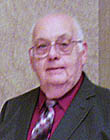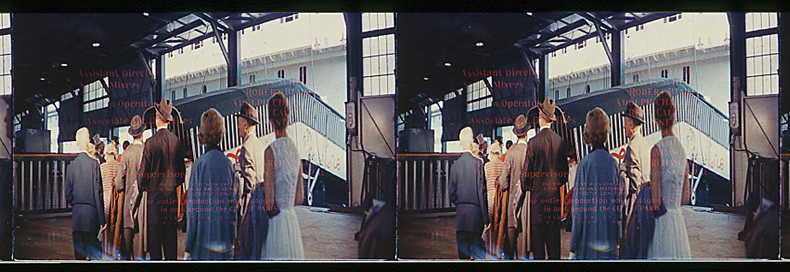 |
|
 Home Home
 Products Products
 Store Store
 Forum Forum
 Warehouse Warehouse
 Contact Us Contact Us

|
|
|
|
 
|
|
Author
|
Topic: Was ther an anamorphic of White Christmas?
|
|
|
Steve Matz
Jedi Master Film Handler
Posts: 672
From: Billings, Montana, USA
Registered: Sep 2003
|
 posted 07-28-2014 09:10 PM
posted 07-28-2014 09:10 PM




The Paramount camera department had in its inventory a William Fox "Natural Color" camera built in the late 1920s by the William P. Stein Company. This camera exposed two frames at a time through color filters. John R. Bishop, head of Paramount's camera and film processing departments, cut out the separation between the two vertical frames, rolled the camera over on its side and fitted it with Leica still camera lenses. The "Lazy-8" camera, so called because of its horizontal 8 perforation pull down (or pull across), provided a useable negative area 2.66 times greater than a standard 35mm film with a 1.66:1 aspect ratio. Paramount liked the results obtained with the "Lazy-8" and set about to obtain a second "Natural Color" camera. With two cameras available, Paramount began filming White Christmas in 8 perf and placed orders with Mitchell Camera Company to develop a new silent studio camera for the process that had been christened "VistaVision."
White Christmas was a very popular song but it was not a particularly good introduction of VistaVision, though it did pretty good box office. When the first of the new cameras arrived they were immediately put into use in Cecil B. DeMille's production The Ten Commandments, which would not reach the screen for two more years. In the meantime the older conversions and additional new cameras were put to use, initially filming all of Paramount's color productions and ultimately their black and white features, too. Using new Mitchell movements, Technicolor converted six of their old three-strip color cameras for VistaVision. When an adequate supply of Mitchell VistaVision cameras were available, Technicolor's converted cameras would have anamorphic attachments added in 1957 to be used to produce Technirama films.
While the first conception of VistaVision called for standard 35mm prints, Paramount felt that the negative quality allowed for a variety of prints to be made. Several features were shown in 8 perf horizontal contact prints in limited runs. These included White Christmas, Strategic Air Command, To Catch A Thief, and several Rank Studios productions from Britain such as The Battle of the River Plate (a.k.a. Pursuit of the Graf Spee). While Paramount tried to keep with their preferred aspect ratio of 1.66:1, they also made provisions for 35mm four perf anamorphic prints with an aspect ratio of approximately 2:1. The special 8 perf horizontal prints and the anamorphic prints did not see much use and the vast majority of VistaVision films were released on standard 35mm flat prints which the theatres showed in the same aspect ratio as other non-anamorphic films. With Technicolor dye transfer printing and the large format Eastmancolor negative, VistaVision films, regardless of print type, provided an extremely sharp image with beautifully saturated colors.
| IP: Logged
|
|
|
|
|
|
|
|
|
|
All times are Central (GMT -6:00)
|
|
Powered by Infopop Corporation
UBB.classicTM
6.3.1.2
The Film-Tech Forums are designed for various members related to the cinema industry to express their opinions, viewpoints and testimonials on various products, services and events based upon speculation, personal knowledge and factual information through use, therefore all views represented here allow no liability upon the publishers of this web site and the owners of said views assume no liability for any ill will resulting from these postings. The posts made here are for educational as well as entertainment purposes and as such anyone viewing this portion of the website must accept these views as statements of the author of that opinion
and agrees to release the authors from any and all liability.
|
|
|
|

 Home
Home
 Products
Products
 Store
Store
 Forum
Forum
 Warehouse
Warehouse
 Contact Us
Contact Us




 Printer-friendly view of this topic
Printer-friendly view of this topic











